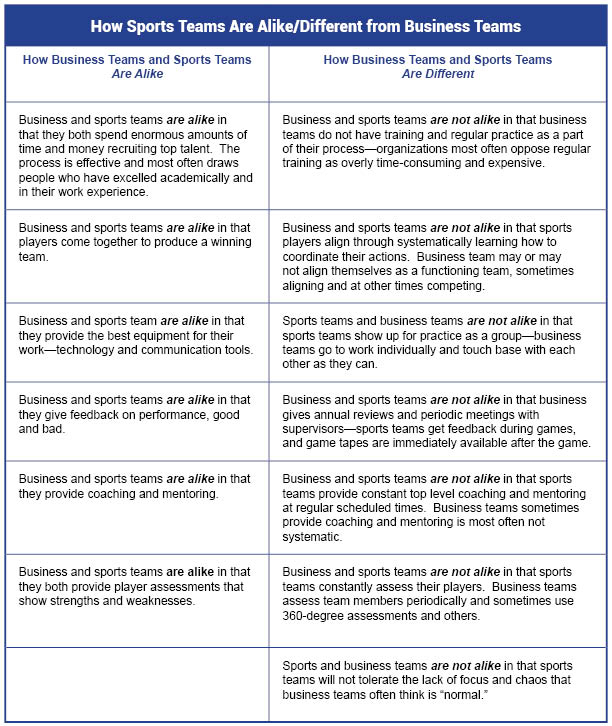Do you work on a team or on a treadmill? The whole concept of business teams needs some serious re-thinking.
There is nothing more beautiful than watching a professional soccer/football team like Buenos Aires’ Boca Junior move down the field through their opponents and blast the ball past the scrambling, out-maneuvered goalie.
But how is a business team like a sports team? Business teams really don’t seem very much like sports teams at all.
In the early 90’s organizations decided they would organize into teams for fluid, rapid action. Yet to this point in the history of business, the use of the term “team” has more often been a very imperfect metaphor rather than a reality.
The manner in which business leadership teams are organized is basically flawed. Business teams today are more like modified old-styled hierarchies from pre-personal computer days, unlike agile sports teams that work together as a coordinated unit. Business teams are slower to react and find it more difficult to see what’s happening in the moment. They are much more expensive to manage.
In the pre-personal computer world prior to 1990, hierarchical business departments stood apart as intentional functional silos. As each department completed its part of the process—financial, purchasing, sales, service delivery—it passed on its part of the work to another department for further processes.
Separate departments had different rules, regulations, procedures and cultures. They did their work and protected their turfs. Today’s teams are aggregates of people organized around a function—Finance, Product, Sales, Engineering. They remain as modified hierarchies.
If business teams could achieve their original vision of becoming fast-moving, highly coordinated, agile organizations, their effectiveness would increase exponentially. Aligned and fleet of foot organizations are the greatest opportunities that organizations have to transform their ability to lower costs and achieve goals.
Organizations often don’t see the fundamental differences between sports teams and business teams. Here are some of the ways they are like, and the many ways they are different.

There have been a number of movements that have changed the face of business and made it more competitive on a global level. Some were process improvement, total quality, and reengineering, many of which are still part of organizations across the world. The frontier of today is organizational team alignment, from hierarchical hybrids to true teams that are agile, adaptive, goal-focused, and relentless in their desire to win. It is the greatest opportunity today to transform organizations.






